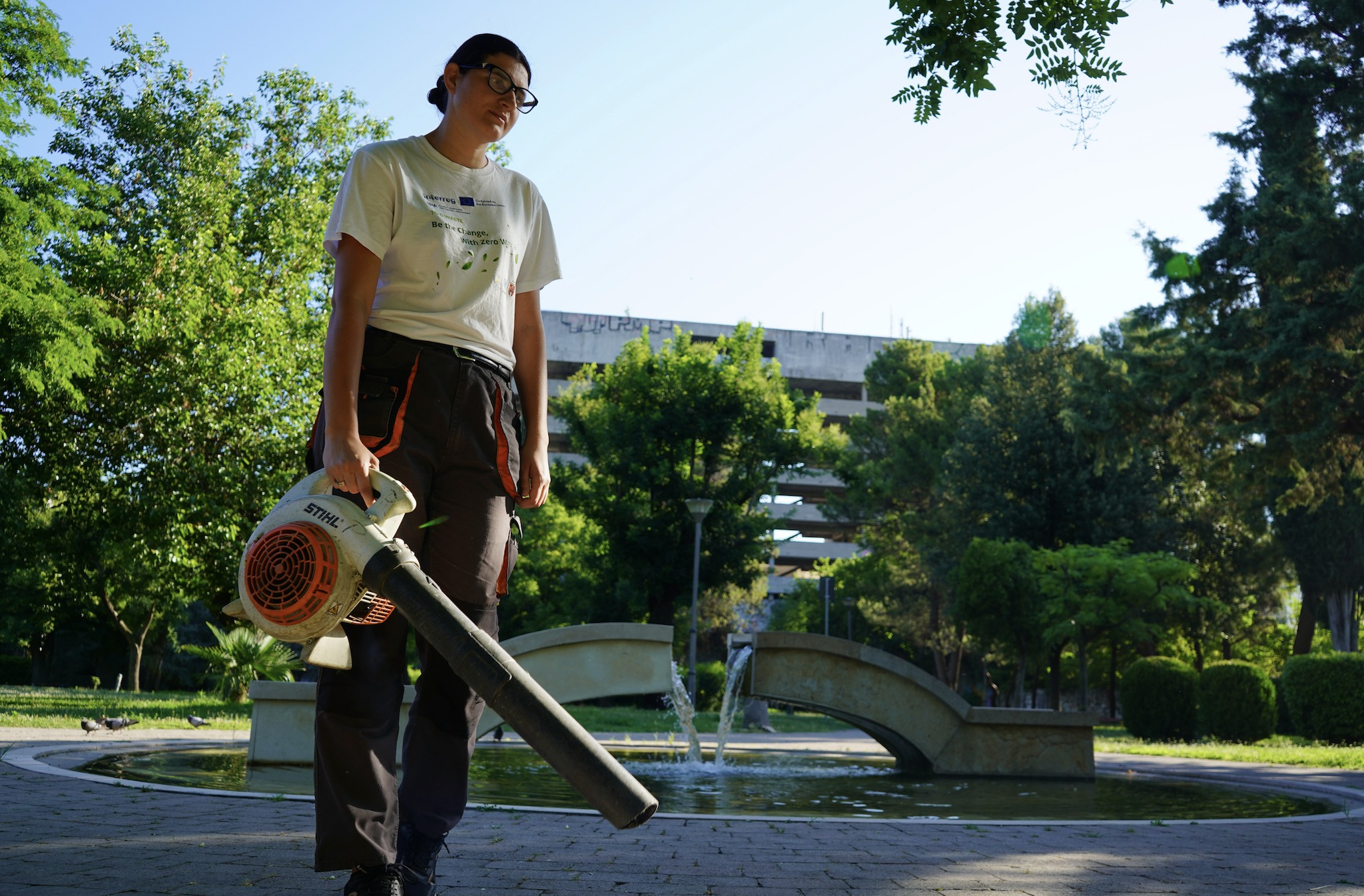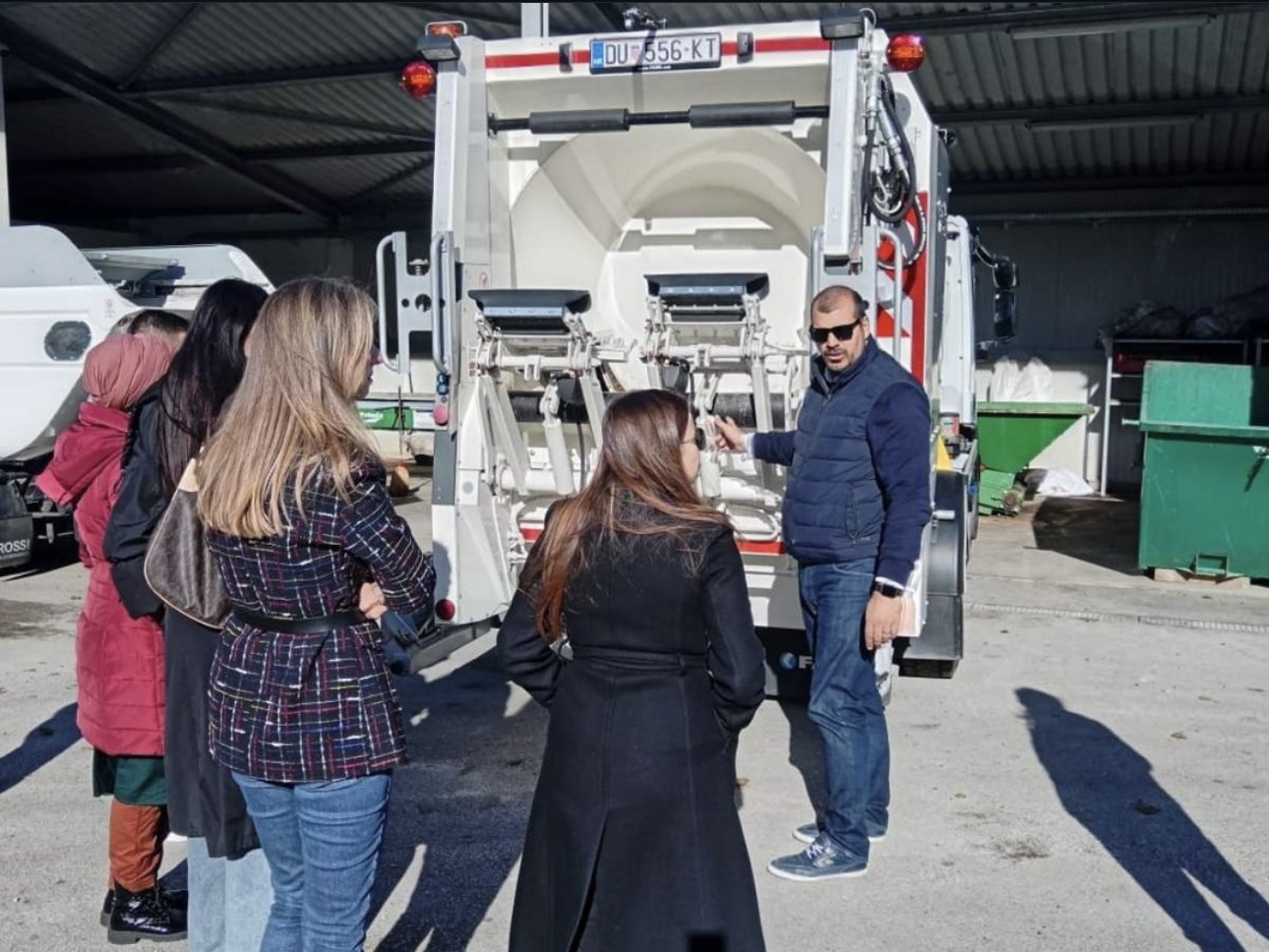
The European Union supports candidate countries in establishing the standards required for equal participation within the Union, including by financially backing knowledge exchanges between Member States and candidates. At present, two cooperation projects are under way between Croatia, Bosnia and Herzegovina, and Montenegro – Cross-Border Cooperation for Zero Waste and Improving the Cross-Border Emergency Response.
The To Zero Waste project is being implemented within the Interreg IPA Cross-Border Cooperation Programme Croatia – Bosnia and Herzegovina – Montenegro 2021–2027. The Municipality of Tuzi in Montenegro is the lead partner, joined by the Municipality of Konavle in Croatia and the City of Mostar in Bosnia and Herzegovina.
“The project is focused on sustainable and efficient waste management in these three communities, with the aim of introducing more effective separate waste collection, reducing the number of illegal dumpsites, and lowering the volume of waste ending up in landfills. We are procuring vehicles for the removal of municipal and bulky waste, mobile recycling yards, and containers for waste separation. In addition, clean-up and greening actions are planned for illegal dumpsites, alongside educational and promotional campaigns for citizens,” explains Adela Bahović, the project manager in the Municipality of Tuzi.
Representatives from Mostar and Tuzi point out that residents will find it easier to separate waste, enjoy cleaner towns, and benefit from a more efficient bulky waste collection system.
“Citizens can already see the first results through the newly installed mobile recycling yard and containers placed in public spaces for selective waste collection. By the end of the project, the waste management system will be modernised and more efficient – what remains is to remove the illegal dumpsites and install video surveillance,” says Ines Ćorić, project coordinator at the City of Mostar.
Bahović stresses that cooperation lies in joint planning, the exchange of knowledge and experience, and the alignment of activities to ensure that results are sustainable and applicable in different local contexts. A bulky waste management plan for the period 2025–2030 is also envisaged, to be applied in both Tuzi and Mostar.
“The Municipality of Konavle already has more advanced waste management practices and is sharing its experience with Tuzi and Mostar. Joint clean-up actions, the purchase and use of the same type of equipment, and parallel awareness-raising campaigns under the common slogan Be the Change with Zero Waste show that the three communities are working as partners rather than as isolated entities,” Bahović emphasises.
She warns that the biggest challenges are changing citizens’ habits regarding waste separation, insufficient infrastructure for selective collection, and the large number of illegal dumpsites. To overcome this – with the message that a waste-free future is possible – educational workshops for residents are planned, involving even the youngest members of the community. The awareness campaign also features top European athlete Lana Pudar from Mostar, who promotes the slogan Be the Change for Zero Waste!

“The aim is to encourage residents of these communities to separate their waste and to use cloth bags instead of plastic, which can take up to a thousand years to degrade in nature,” adds Ćorić.
Residents are already noticing the changes.
“The city is much tidier than before – they’ve installed recycling machines in busy areas, and I often see refuse workers in uniforms with the project logo. That’s when I realised the EU was involved, which makes me very happy. I’ve also seen Lana Pudar on social media talking about the changes – people will certainly notice and listen to her because she’s so well loved,” says one woman from Mostar we met in the city.
Through the project, all three local communities will acquire specialised equipment for collecting and separating waste, rehabilitate and green several local illegal dumpsites, and install video surveillance at sites where waste is unlawfully dumped. With a budget of €2.3 million, the operation is scheduled for completion in January 2027. Ćorić notes that they have already applied for continuation funding – TO ZERO WASTE 2 – in order to build on current investments and enhance the system with digital solutions.
At the same time, the INEREP – Project for Improving Cross-Border Emergency Response, part of the Interreg VI-A IPA Programme with a budget of €14.84 million, will see Croatia, Bosnia and Herzegovina and Montenegro working together to strengthen their collective capacity to respond to environmental hazards and protect the natural environment. Over the 48-month period, the lead partner will be Split-Dalmatia County, along with the Firefighters’ Education and Technology Development Centre in Split. Partners in Bosnia and Herzegovina include the civil protection services of the Federation of BiH and Republika Srpska, as well as the Brčko District Development and Guarantee Fund. In Montenegro, the Ministry of Interior – Directorate for Emergency Management is the partner institution.

“The project involves the procurement of specialised equipment and vehicles, the modernisation and equipping of training centres – including VA.C.E.T.RA.S in Split – the development and piloting of the FireGIS digital tool for real-time wildfire risk assessment, as well as joint training and exercises. The goal is interoperability – ensuring that teams from the three countries work according to harmonised protocols and use compatible equipment and tools. For citizens, the benefit is faster, better-coordinated responses, with better-equipped and trained teams. The first results can be expected as early as 2026,” explains Ivica Šitum, Senior Advisor for Coordination and Development at Split-Dalmatia County.
He highlights that the main challenges will be aligning cross-border procurement procedures, delivery timelines for specialised equipment, data standardisation for FireGIS, ensuring training safety during heatwaves, and administrative compliance.
“As the lead partner, we bring extensive experience from our previous strategic project in which we worked with partners from Italy,” Šitum notes.
The overarching aim of INEREP is to reduce the risks associated with climate change and strengthen environmental resilience by enhancing the organisational and technical capacities of emergency services, particularly in firefighting and rescue operations. The project also focuses on raising public awareness and fostering participation in disaster preparedness efforts.
Representatives from Mostar and Tuzi point out that residents will find it easier to separate waste, enjoy cleaner towns, and benefit from a more efficient bulky waste collection system.
“Citizens can already see the first results through the newly installed mobile recycling yard and containers placed in public spaces for selective waste collection. By the end of the project, the waste management system will be modernised and more efficient – what remains is to remove the illegal dumpsites and install video surveillance,” says Ines Ćorić, project coordinator at the City of Mostar.
Bahović stresses that cooperation lies in joint planning, the exchange of knowledge and experience, and the alignment of activities to ensure that results are sustainable and applicable in different local contexts. A bulky waste management plan for the period 2025–2030 is also envisaged, to be applied in both Tuzi and Mostar.
“The Municipality of Konavle already has more advanced waste management practices and is sharing its experience with Tuzi and Mostar. Joint clean-up actions, the purchase and use of the same type of equipment, and parallel awareness-raising campaigns under the common slogan Be the Change with Zero Waste show that the three communities are working as partners rather than as isolated entities,” Bahović emphasises.
She warns that the biggest challenges are changing citizens’ habits regarding waste separation, insufficient infrastructure for selective collection, and the large number of illegal dumpsites. To overcome this – with the message that a waste-free future is possible – educational workshops for residents are planned, involving even the youngest members of the community. The awareness campaign also features top European athlete Lana Pudar from Mostar, who promotes the slogan Be the Change for Zero Waste!

“The aim is to encourage residents of these communities to separate their waste and to use cloth bags instead of plastic, which can take up to a thousand years to degrade in nature,” adds Ćorić.
Residents are already noticing the changes.
“The city is much tidier than before – they’ve installed recycling machines in busy areas, and I often see refuse workers in uniforms with the project logo. That’s when I realised the EU was involved, which makes me very happy. I’ve also seen Lana Pudar on social media talking about the changes – people will certainly notice and listen to her because she’s so well loved,” says one woman from Mostar we met in the city.
Through the project, all three local communities will acquire specialised equipment for collecting and separating waste, rehabilitate and green several local illegal dumpsites, and install video surveillance at sites where waste is unlawfully dumped. With a budget of €2.3 million, the operation is scheduled for completion in January 2027. Ćorić notes that they have already applied for continuation funding – TO ZERO WASTE 2 – in order to build on current investments and enhance the system with digital solutions.
At the same time, the INEREP – Project for Improving Cross-Border Emergency Response, part of the Interreg VI-A IPA Programme with a budget of €14.84 million, will see Croatia, Bosnia and Herzegovina and Montenegro working together to strengthen their collective capacity to respond to environmental hazards and protect the natural environment. Over the 48-month period, the lead partner will be Split-Dalmatia County, along with the Firefighters’ Education and Technology Development Centre in Split. Partners in Bosnia and Herzegovina include the civil protection services of the Federation of BiH and Republika Srpska, as well as the Brčko District Development and Guarantee Fund. In Montenegro, the Ministry of Interior – Directorate for Emergency Management is the partner institution.

“The project involves the procurement of specialised equipment and vehicles, the modernisation and equipping of training centres – including VA.C.E.T.RA.S in Split – the development and piloting of the FireGIS digital tool for real-time wildfire risk assessment, as well as joint training and exercises. The goal is interoperability – ensuring that teams from the three countries work according to harmonised protocols and use compatible equipment and tools. For citizens, the benefit is faster, better-coordinated responses, with better-equipped and trained teams. The first results can be expected as early as 2026,” explains Ivica Šitum, Senior Advisor for Coordination and Development at Split-Dalmatia County.
He highlights that the main challenges will be aligning cross-border procurement procedures, delivery timelines for specialised equipment, data standardisation for FireGIS, ensuring training safety during heatwaves, and administrative compliance.
“As the lead partner, we bring extensive experience from our previous strategic project in which we worked with partners from Italy,” Šitum notes.
The overarching aim of INEREP is to reduce the risks associated with climate change and strengthen environmental resilience by enhancing the organisational and technical capacities of emergency services, particularly in firefighting and rescue operations. The project also focuses on raising public awareness and fostering participation in disaster preparedness efforts.
Please wait while your video is being uploaded...
Don't close this window!